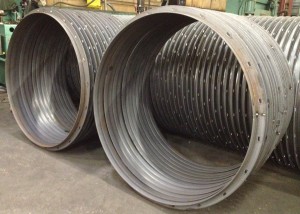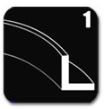Angle rings, also called “angle flanges,” commonly are provided with or without bolt holes. When used as mating flanges, the rings are either welded together or bolted together. In order to bolt together properly, several dimensions must be specified and held.
The rings which are often sized in one-inch increments from 3in diameter to 72in diameter often have standardized bolt patterns. But the variety of angle rings is endless because they can be made to an innumerable number of sizes. Rings can often be made with a diameter tolerance of +/- 1/16in. This close tolerance is important in order to have the rings match up correctly.
The most common angle rings are those called “leg out” angle rings, a section of which is shown below.
Bolt holes are commonly put in the horizontal leg, i.e. the leg that is like the brim or an old-timey hat. What needs to be specified is the following:
- The leg that will have the holes
- The size of the holes and whether they are round, slotted or some other shape
- The number of holes
- The spacing between the holes which may be regular or irregular
- The bolt circle of the holes taking care that it is not located too near the vertical leg nor too near the edge of the horizontal leg (unless the edge of the horizontal leg is to be notched, for example.)

Bolt holes can also be put in the vertical leg. What needs to be specified here is the following:
- The leg that will have the holes
- The size of the holes and whether they are round, slotted or some other shape
- The number of holes
- The spacing between the holes that may be regular or irregular
- The gauge line on the vertical leg which will locate the holes on the ring. Again, care should be taken not to locate this gauge line too close to the horizontal leg or to the edge of the leg (unless intended as a notch, for example.)
Lastly, bolt holes can be put in angle rings with other orientations than leg-out. They can be put in leg-in angle rings, in apex-in, apex-out, and other off-axis orientations as well as in multi-radius, helical and other rings with compound bends.








